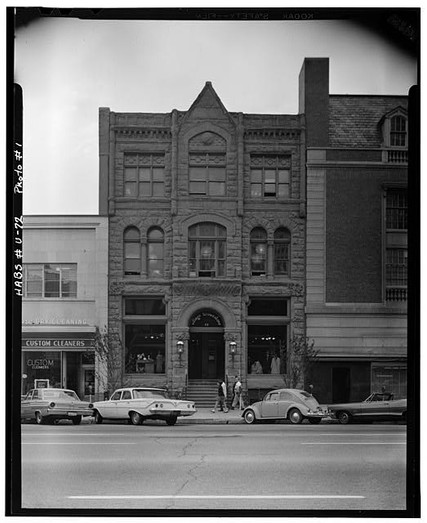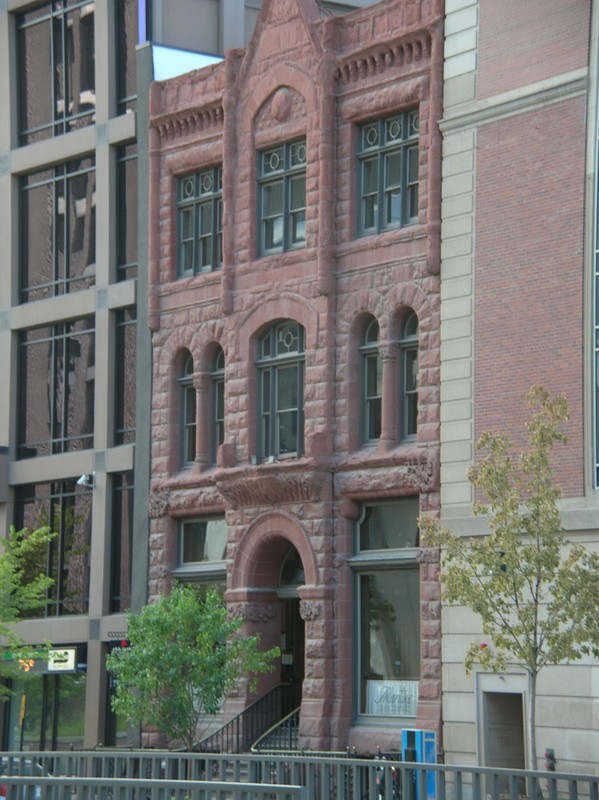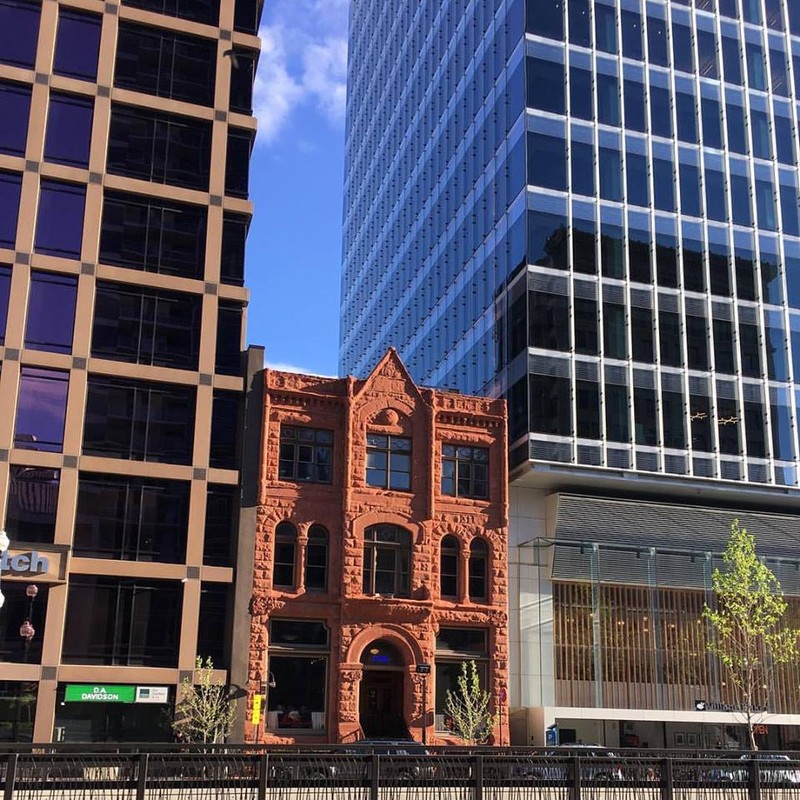Utah Commercial and Savings Bank Building (A.K.A. Village Brownstone Building)
Introduction
Text-to-speech Audio
Images
1968 North (Front) Elevation, Utah Commercial & Savings Bank, 22 East First South Street, Salt Lake City, Salt Lake County, UT

Modern Picture, Utah Commercial & Savings Bank Building -- Date Unknown

"Village Brownstone Building: It's still 1888 between all the steel and glass." May 20, 2017.

Backstory and Context
Text-to-speech Audio
Sources
Roberts, Allen D. "Nomination Form: Utah Commercial and Savings Bank Building." National Register of Historic Places. June 18, 1975. https://npgallery.nps.gov/GetAsset/c4fc6cb6-47af-4be5-970f-0a996cb24443
--- --- ---. Images of America: Salt Lake's Historic Architecture. Charleston, South Carolina: Arcadia Publishing, 2012.
"Salt Palace Now in Ashes." Desert News(Salt Lake City), August 29, 1910, Evening ed. https://news.google.com/newspapers?id=BIJSAAAAIBAJ&sjid=x0cDAAAAIBAJ&pg=6382%2C3710354
Tullidge, Edward William. History of Salt Lake City. Salt Lake City: Star Printing Co., 1886.
Whiteside, Henry O. "Nomination Form: Francis Armstrong House." National Register of Historic Places. May 23, 1980. https://npgallery.nps.gov/GetAsset/ae56f07c-ff0a-4db0-9d05-c6f4f8c7f176
Photo Sources
1968 Photo: Library of Congress, Historic American Building Survey, P. Kent Fairbanks, Photographer: http://www.loc.gov/pictures/item/ut0059.photos.157813p/
Modern Picture: Utah Center of Architecture - http://utahcfa.org/project/utah-commercial-savings-bank-building
Village Brownstone Building: Trisha Singh, via Facebook & Instagram, https://scontent-ort2-2.xx.fbcdn.net/v/t1.0-9/18557131_10212969497493337_7663442361505963740_n.jpg?o...
